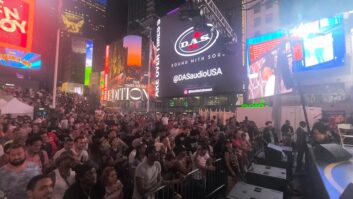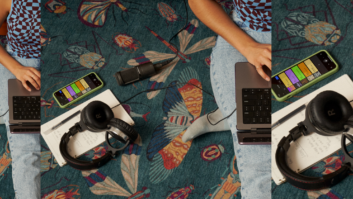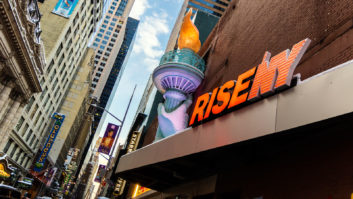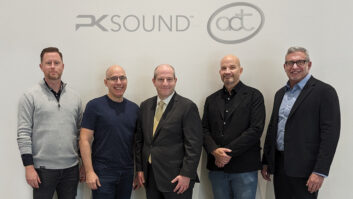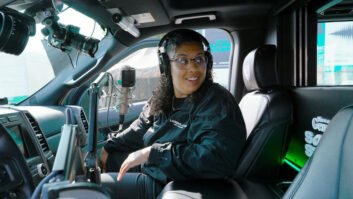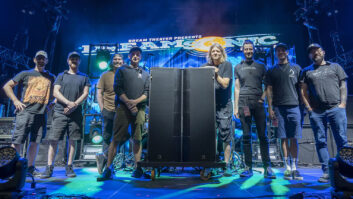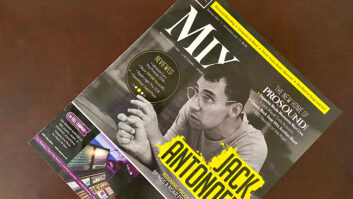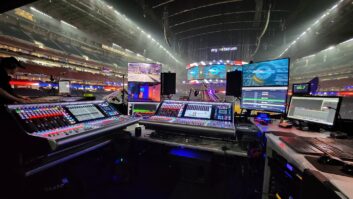
For the recording industry, the building located at 723 Seventh Avenue in the heart of the Times Square district is rich with history. Once home to the massive Quad Studios complex, the building has played host to a number of A-List artists over the years, including Whitney Houston, U2, Busta Rhymes, Jay Z, Shakira and Bon Jovi. The complex is also the location of the 1994 shooting of rapper Tupac Shakur—a fact that today’s building employees are happy to share with visitors.
But while Quad now only occupies the 10th floor of the 13-floor building, other major studios are moving in to this historical site to offer their recording talents to the city’s musicians.
The most recent addition to the building is Terminus Studios, a 3,000-square-foot studio space situated on the penthouse floor. Back in 2006, Terminus owner Andrew Koss purchased the space from Quad and started the private recording studio Tainted Blue. After running the studio for a few years, Koss decided it was time to open his space to the public, and hired current Terminus Studio Manager Christian Rutledge to help make the change.
“This is really an effort to make sure it (the studio) is used the way it should be. We’ve hired the right people to help us run it and decide what changes need to be made,” Koss said.
Grammy award-winning producer and engineer Michael Freeman also joined the team as Terminus’ Managing Director, but the business structure of the studio wasn’t the only thing to get a makeover.
Terminus Studios consists of two studios, called A and B. Studio A houses an Avid System 5 console with SuperCore 6 DSP cards, along with Apogee converters, Pro Tools HDX2, and Dynaudio M4s, ProAc S100s and Focal Twin-6 monitors with Sub-6, Yamaha NS10s and Dynaudio Air5s subs. The studio also offers analog options by Neve, API, Chandler, U/A, GML and more.
Facing Studio A is the main, 400 square foot live room, with a Steinway grand piano that once belonged to Koss’s great-grandmother. Within the room is also a small isolation booth where musicians can write or record in a more intimate setting.
Down the hall from Studio A is the smaller Studio B, which offers Pro Tools 10 HD, Apple Logic Pro, Ocean Way Drum Suite, and other digital and analog options. This studio provides artists with a smaller space to write and record, and is linked to the isolation booth so artists in both rooms can record at the same time without interference.
“We built this space for flexibility,” Rutledge commented. Case in point: The Avid System 5 console, which is linked directly to the Pro Tools system in both Studios A and B. During an open house on October 24, Koss demonstrated how he can pull a project from Studio B to the main console in Studio A, all with the click of a mouse.
“My understanding is that Andrew saw this console as more powerful, and I know he wanted to go digital,” said Rutledge. “We looked at the SSL Duality, but this console was more towards where we wanted to be.”
Terminus Studios officially opened on October 24, but Rutledge said artists including Philip Glass, Andre Previn and Michael Feinstein have already used the new studio for recording. Rutledge said the studio welcomes clients of all genres. “We’re open to everything. The building has a focus on pop and hip hop, but we also have a rock and roll history here,” he explained.
Looking forward, Rutledge said he wants to keep the focus on the clients, offering them the best recording experience while using the studio. “We want to make sure we’re seen as a place that takes great care of the artists and treats every project as their own,” Rutledge explained. “Any engineer knows it can be stressful to run a session, and we want the artists to know we’ve got their back.”
In the longer term, Rutledge said he would like to see the studio expand to offer more rooms for artists, but he said that goal would take longer to accomplish. “We’ve got a lot of work ahead of us,” he said. “Opening a studio is always a risk, but all of us who understand the risks also know it’s worthwhile.”
Terminus Studios
www.terminusnyc.com
